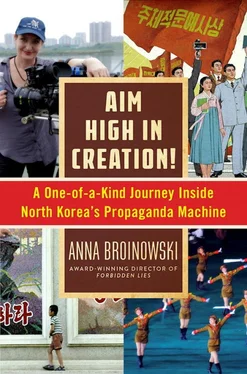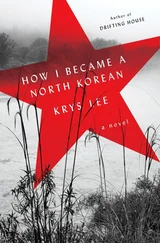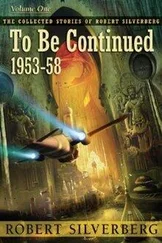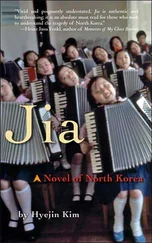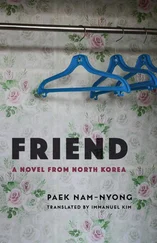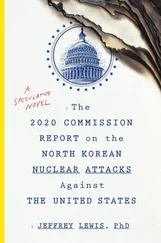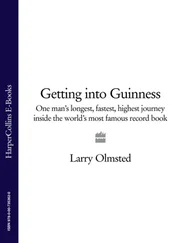Anna Broinowski
AIM HIGH IN CREATION!
A ONE-OF-A-KIND JOURNEY INSIDE NORTH KOREA’S PROPAGANDA MACHINE
September 6, 2012, 8 a.m.
I’M LYING ON A KHAKI BED at the top of the Yangakkdo Hotel: home to almost every entrepreneur, hack, spy, missionary, NGO and other misfit lucky enough to have snared a visa to the most isolated nation on earth. Unless, of course, you’re cross-dressing NBA star Dennis Rodman, in which case you’re probably greeting the day in the lavish palace of North Korea’s basketball-mad leader, Kim Jong Un.
The Yangakkdo thrusts above Pyongyang from an island in the Taedong River. At a distance it’s impressive—an ominous monolith dwarfing the landscape, like Stanley Kubrick’s plinth in 2001: A Space Odyssey . Closer up, the cracked glass and corroded casing reveal that the skyscraper, like so much else in this mysterious place, is a barely functional facade. According to rumours I’ve collected so far, the forty-six floors below my room are totally empty. Floor Five, which is accessible only via a hidden staircase, reportedly has banks of surveillance monitors—trained on every foreigner on my floor.
A narrow bridge connects us to the city’s neat concrete sprawl. You may traverse it daily in a bus or car, chaperoned at all times by a North Korean minder. You may not cross it alone. I discovered this yesterday, when I set out for a stroll and was stopped by the bellboys. There was a choreography to their movements, a firmness behind their smiles, as they manoeuvred me into the revolving door with its plastic flower tubs and spun me back into the cavernous lobby.
I guess I could sneak down to the river and swim across. But the prospect of bellboys in wetsuits, crouching behind the Yangakkdo’s clipped bushes, ready to spring with ninja-like efficiency on anyone who tries such a thing, feels too real.
I focus on dozing off my jet lag. And scanning the ceiling for the glint of hidden cameras.
In exactly twelve minutes, I will receive a chirpy call from Ms. K, wondering why I am not at breakfast. That’s code for “get in the elevator now”: with the Yangakkdo’s creaking carcass plagued by power outages, the lift down can take up to eighteen minutes.
Yesterday, my unflappable British cinematographer Nicola Daley and I learnt it’s not a good idea to keep Ms. K waiting. We were twenty minutes late, wrangling our cameras, tripods, and battery-powered lights onto rusty trolleys and down to the idling van. Ms. K, in a Hawaiian shirt and hot-pink pants, maintained a frosty silence all the way to our first shoot at the Pyongyang Film Studio.
At the studio gates, the Kalashnikov-toting sentry glared at her watch, shot us a red-lipsticked scowl, and slid open the metal portcullis in insouciant slow-mo. Only once we’d lugged our gear with head-bowed reverence past the Dear Leader Kim Jong Il’s statue, and offered chocolates to the chain-smoking filmmakers waiting in the meeting room, did Ms. K relax and flash me her usual half-happy, half-rueful smile.
In a minute I will don the white shirt and slip that are to be my new, respectable front for today’s interviews—along with a thick layer of artful makeup. War paint is not my thing, but the North Koreans pride themselves on judging character through the face.
So far, the perky young interpreter Ms. K has chosen for us appears to be editing everything I say. I am not taking any more chances.
I am the only Western filmmaker ever granted total access to the North Korean film industry. I am determined to win the trust of the artists who have built one of the most successful propaganda machines on earth—shaping the thoughts and dreams of an entire nation. I want to discover what motivates them, how they live, who inspires them, and what they know. It has taken me two years to get here. I have two weeks to find out.
I stretch and shuffle to the window. Forty-seven floors below, the iron barge that has punctuated my night with its toe-curling screech continues to scrape rocks, one by one, from the muddy river. It’s a quaint soundtrack: the steampunk rattle of a nation stubbornly wedded to growth, despite its nineteenth-century technology. I wonder if the grey-pyjamaed men heaving rocks off the chute go ashore to sleep, or if they are chained to the barge around the clock. With up to two hundred thousand people labouring to their deaths in gulags that Ms. K will never permit me to mention, let alone film, anything’s possible.
But the prison camps seem far, far away from the strangely beautiful city spread out before me, with its pastel buildings and lush green parks. The light bouncing up from the river is soft and clean, infusing my drab room with possibility. It silvers the carved arms of the brocade chairs; the peeling veneer of the bar-fridge; the boxy edge of the no-name TV; the wall calendar of Mount Paektu, birthplace of Kim Jong Il, recently deceased.
The Dear Leader’s rosy face rises above Paektu’s snow-dusted crater, beaming his Technicolor smile. His permed head is haloed by a double rainbow and a star, in a glorious blood-of-the-workers sunset, Juche 100. That’s 2012 in my parallel but no longer accessible Western universe: a place which accepts that Kim Jong Il was actually born in a Siberian hut in 1942—where his mother kept him rugged to his eyeballs in Vyatskoye mink for three frozen winters, while his father, Kim Il Sung, waged a bloody guerrilla war to wrest Korea back from the occupying Japanese.
The world I’ve left knows that the “new star” and “double rainbow” the North Koreans believe miraculously appeared above Paektu the day Kim was born are an elaborate mirage, along with his astonishing ability to drive a car at age three and his genius-level prowess at everything from golf, animal husbandry, fashion design, dam-building, and nuclear weaponry to the magical art of cinema. It’s all part of the god-like personality cult woven by Kim Senior, Holy Father of North Korea’s Socialist Paradise and Heroic Vanquisher of the Imperialist Japs and Invading Yankee Bastards, and skilfully perfected by his cherubic, platform heel–wearing son.
I officially left that world two days ago, when I handed my phone to a guard at Pyongyang Airport, watching her wrap it up in pink paper and file it away under a hand-written sign: Mobile phone collection point . The Yangakkdo’s check-in lady stashed my passport away with similar efficiency, informing me with a smile that the Internet is not available anywhere in the country. In an emergency, I may send one email from the hotel’s only computer: a nineties dinosaur perched on a doily under an optimistic banner: Tailor & Business Centre . The computer is programmed to block all email replies.
I look up at the Dear Leader on my wall, glowing with the lusty certainty of a man who has drunk a lot of A-grade Cognac, and am relieved that at least I know where my passport is. I have spent two years inside this man’s strange mind: reading his words, watching his films, hearing stories of people he tortured, surfing websites devoted to deadpan photographs of him giving “on-the-spot guidance” to notebook-carrying minions—in Hungnam textile factories, Pyongyang movie sets, and communal turtle farms in Taedong. Ostensibly, I’m here to make a film. But in reality, like the man who has inspired it, I want to airbrush my life.
Not long ago, my partner sat up in bed and revealed, as partners sometimes do, that he’d met someone else. No, it wasn’t just an affair. Yes, he was sorry. But nothing could be done. He was in love, and couldn’t wait to introduce her to our daughter—over gelato at Bondi, or testing Ikea futons for their new flat. They were going to spend their lives together in marital bliss—a state which, he correctly pointed out, had mostly eluded us. I was devastated.
Читать дальше
